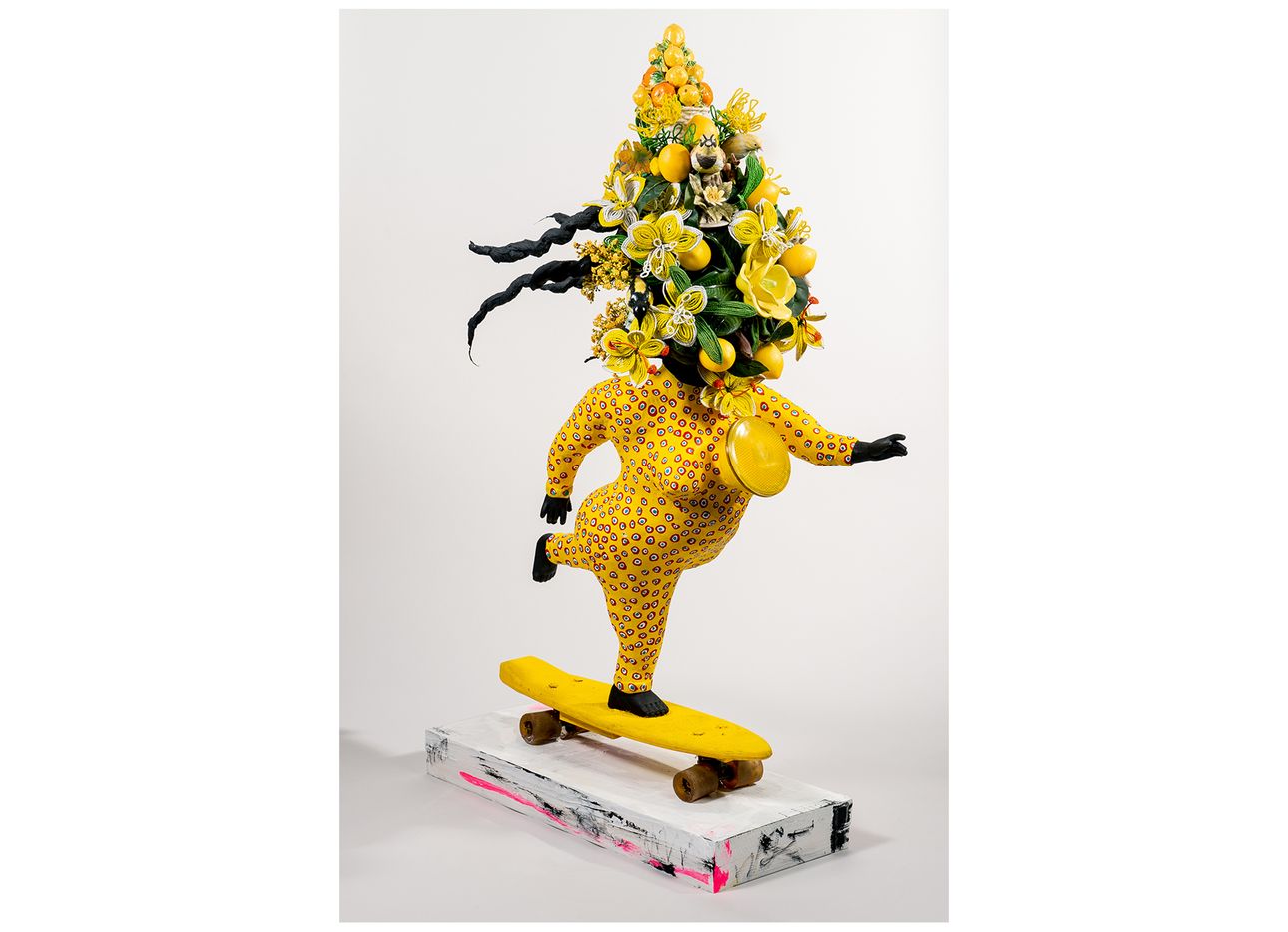
vanessa german’s Collaged Sculptures Are Ornate Icons of Healing and Protection
To speak with self-described “citizen artist” vanessa german about her creative practice is to talk with her about art as a means of revitalization and protection. Particularly for the Black community.
The self-taught sculptor, poet, and performer lives and works in the Homewood neighborhood of Pittsburgh, a predominantly African American area that has long struggled with poverty and gun violence. There, she handcrafts sculptures out of locally found objects that she embellishes with materials including beads, glass, fabric, and wood to create what she calls “power figures”: large, often human-shaped forms that draw inspiration from the Kongo people’s minkisi n’kondi, protective charms believed to hold spiritual energy. Through these forms, german offers gateways to collective healing, and confronts the historical and day-to-day forces of structural racism, white supremacy, heteropatriarchy, and misogynoir.
german’s output extends out of her ongoing activism. In 2011, after moving her studio outside of her home, her new space began to regularly attract young, curious onlookers, whom german in turn gave art materials and encouraged to make works of their own. From there, she founded Love Front Porch, an art-making initiative for Homewood’s women, children, and families. Three years after that, the effort became part of ARTHouse, a grassroots community center german created where anyone can visit and create. “I’m literally watching people around me wake back up to their creative capacity,” she says. “Every work of art that I make has work to do.”
The insights and energy german receives from the community around her play a crucial role in her own art-making, and helped inform her new body of work filling the Kasmin gallery booth at this week’s Independent Art Fair (May 5–8) in New York City. The sculptures, which are presented in dialogue with pieces from german’s 2021 series “The Artist Channels 33 Intimate Technologies of Soul,” explore the physical and metaphysical phenomena that can affect the heart. Less tangible items appear in the long, unconventional list of materials that comprise each piece. One figure, titled “Love Poem for Lil Kim” (2022), for example, combines pink tennis shoe key rings and bamboo earrings with “shame and its opposite,” “love and resistance,” and “the death of several of your friends and no real way to process it in the public.”
For those who come in contact with them, german wants her sculptures to encourage self-awareness. Often, she has watched people interact with her figures through personal memories—a lard can or an old radio can speak to them, awakening something inside, and opening doors to curiosity and an expansion of the mind. “I’m interested not necessarily in what people think about my work, but in what they feel when they’re in proximity to it,” she says. “I’m interested in the feeling languages and technologies that people experience, because that’s how the work is active for me.”
The artist’s frequent use of mirrors and shoes make it easy for viewers to see themselves in her work, and to identify with the individual pieces that give each figure life. One recent sculpture, “Black Girl on Skateboard Going Where She’s Got to Go to Do What She’s Got To Do and It Might Not Have Anything to Do With You, Ever” (2022), consists of a full-bodied Black child in the midst of skating, with her left arm outstretched for balance and her braids trailing behind her. “The form recognizes the engine of joy, the engine of deciding for oneself to own,” german says, “and to live, and to move, within the heart and the language of your own joy.” Like all of her figures, it exists to help us center ourselves back into consciousness.